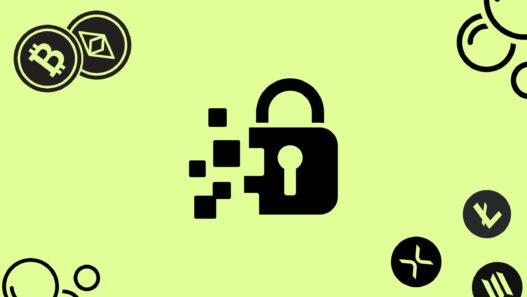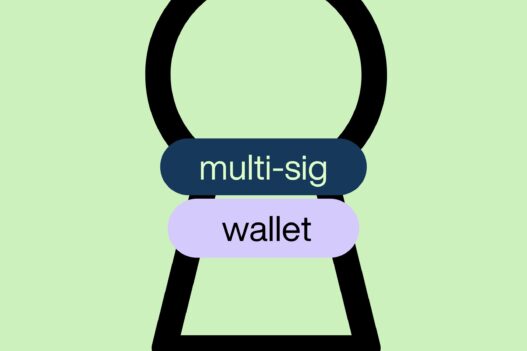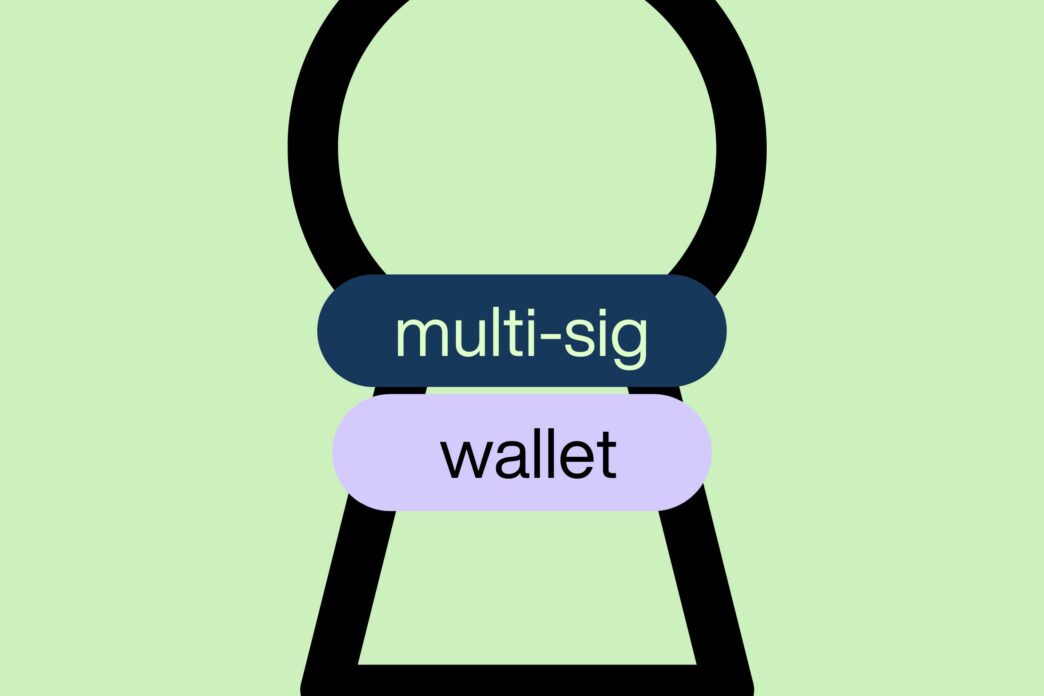In the fast-evolving world of cryptocurrency, where fortunes can be made or lost in an instant, security remains the top priority for users. With hackers, scammers, and technical mishaps posing constant threats, the need for robust safeguards has given rise to innovative solutions. One such solution is the multi-signature wallet—commonly referred to as a multi-sig wallet—a technology that’s transforming how we protect and manage digital assets. But what exactly is a multi-sig wallet, and why is it gaining traction among crypto enthusiasts, businesses, and decentralized communities?
Let’s dive deep into the world of multi-sig wallets. We’ll define what they are, break down how they work, and examine their benefits and potential risks. We’ll also explore real-world use cases, identify who’s using them, and take a look at specific multi-sig wallets for Bitcoin, Ethereum, and Solana. Finally, we’ll gaze into the crystal ball to consider the future of cryptocurrency wallets.
What Is a Multi-Sig Wallet?
A multi-signature wallet is a type of cryptocurrency wallet that requires more than one private key to authorize a transaction. Unlike a standard wallet, which relies on a single private key to sign and send funds, a multi-sig wallet distributes control across multiple keys. This setup adds an extra layer of security, making it harder for unauthorized parties to access the funds.
Imagine a multi-sig wallet as a high-tech safe with multiple locks. To open it, you don’t just need one key—you need a specific combination of keys, say two out of three or three out of five. In crypto terms, this is known as an “M-of-N” configuration, where “M” is the number of keys required to approve a transaction, and “N” is the total number of keys created. For example, in a 2-of-3 multi-sig wallet, any two of the three key holders must sign off before funds can move.
The concept of multi-sig wallets dates back to 2012, when it was first implemented on the Bitcoin blockchain. Since then, it has expanded to other networks like Ethereum and Solana, becoming a go-to solution for those seeking enhanced security and shared control over their digital assets.
How Do Multi-Sig Wallets Work?
To understand multi-sig wallets, let’s start with the basics of a cryptocurrency transaction. In a standard wallet, the owner uses a private key—a long string of characters—to “sign” a transaction, proving they have the right to spend the funds. This signature is verified by the blockchain network using the corresponding public key, and if everything checks out, the transaction is processed.
A multi-sig wallet builds on this process by requiring multiple signatures. Here’s how it works step-by-step:
- Wallet Creation: When setting up a multi-sig wallet, the user defines the M-of-N configuration. For instance, they might choose a 2-of-3 setup, meaning two out of three private keys are needed to authorize a transaction.
- Key Distribution: The wallet generates the specified number of private keys (N), which can be held by one person across different devices or distributed among multiple people. Each key is unique and must be stored securely.
- Transaction Initiation: To send funds, a transaction is created as usual. However, instead of requiring just one signature, the wallet waits for the predefined number of signatures (M).
- Multiple Signatures: The required key holders sign the transaction using their private keys. This can happen on the same device, across different devices, or even in different locations, depending on the wallet’s design.
- Broadcast to the Network: Once the necessary signatures are collected, the transaction is submitted to the blockchain, where it’s verified and executed.
For example, in a 2-of-3 wallet, one key might be stored on a laptop, another on a hardware device like a Trezor, and the third with a trusted friend. If the wallet owner wants to send Bitcoin, they’d sign with their laptop key and then ask their friend to sign with theirs. Only then would the transaction go through.
This mechanism ensures that no single key holder can act alone, making multi-sig wallets ideal for scenarios requiring collaboration or added security.
Benefits of Multi-Sig Wallets
Multi-sig wallets come with a host of advantages that make them a compelling choice for many users. Here are the key benefits:
- Enhanced Security: By requiring multiple keys, multi-sig wallets reduce the risk of theft or loss. If a hacker steals one key, they still can’t access the funds without the others. This is a major upgrade over single-key wallets, which are vulnerable to a single point of failure.
- Shared Control: Multi-sig wallets enable multiple parties to oversee funds, perfect for group scenarios like business accounts or family trusts. For instance, a company might require two executives to approve spending, preventing unilateral decisions.
- Redundancy: The M-of-N setup offers flexibility. In a 2-of-3 wallet, losing one key doesn’t lock you out—the remaining two can still access the funds. This built-in backup is a lifesaver for personal use or inheritance planning.
- Decentralized Governance: In decentralized autonomous organizations (DAOs), multi-sig wallets ensure that community funds are managed collectively. Key holders vote on transactions, aligning with the principles of decentralization.
Potential Risks of Multi-Sig Wallets
Despite their strengths, multi-sig wallets aren’t flawless.
Here are some risks to consider:
- Complexity: Setting up and managing a multi-sig wallet is more involved than a standard wallet. Users must configure the M-of-N structure, securely store multiple keys, and coordinate signatures—tasks that can overwhelm beginners.
- Loss of Access: If too many keys are lost or key holders become unavailable (e.g., due to death or disconnection), funds can become inaccessible. In a 3-of-5 wallet, losing three keys would render the wallet unusable, emphasizing the need for careful key management.
- Trust Issues: When keys are distributed among people, there’s a risk of collusion. In a 2-of-3 setup, two key holders could team up to exclude the third, undermining the intended security.
- Smart Contract Vulnerabilities: On blockchains like Ethereum, many multi-sig wallets rely on smart contracts. If these contracts contain flaws, they can be exploited. The 2017 Parity wallet hack, where $30 million in Ether was stolen due to a coding error, is a stark reminder of this risk.
Use Cases of Multi-Sig Wallets
Multi-sig wallets shine in a variety of real-world use cases:
- Corporate Treasury Management: Businesses holding cryptocurrency use multi-sig wallets to safeguard their assets. A 3-of-5 setup might require approval from the CEO, CFO, and a board member, ensuring accountability.
- Family Inheritance Planning: Wealthy individuals can use multi-sig wallets to secure funds for their heirs. A 2-of-3 wallet might involve the owner, a spouse, and a lawyer, guaranteeing access even if one party is unavailable.
- Decentralized Autonomous Organizations (DAOs): DAOs use multi-sig wallets to manage collective funds. Community-elected key holders must agree on spending, fostering transparency and trust.
- Escrow Services: In peer-to-peer trades, a 2-of-3 wallet can serve as escrow, with keys held by the buyer, seller, and a neutral arbiter. If the deal goes smoothly, the buyer and seller sign; if not, the arbiter steps in.
- Personal Security: Crypto users worried about hacks or lost keys can use multi-sig wallets to distribute risk, storing keys on separate devices or with trusted contacts.
Who Uses Multi-Sig Wallets?
Multi-sig wallets appeal to a wide audience, including:
- Businesses: Crypto exchanges, investment firms, and blockchain startups use multi-sig wallets to protect corporate funds and enforce oversight.
- High-Net-Worth Individuals: Wealthy investors with large crypto portfolios rely on multi-sig for peace of mind.
- Crypto Enthusiasts: Tech-savvy users who value security over convenience often adopt multi-sig solutions.
- DAOs and Communities: Decentralized groups use multi-sig wallets to manage shared resources democratically.
- Developers and Projects: Blockchain teams use multi-sig to handle development funds or community donations transparently.
Popular Multi-Sig Wallets by Blockchain
Multi-sig wallets are tailored to specific blockchains, each offering unique features. Here’s a rundown of notable options for Bitcoin, Ethereum, and Solana:
- Bitcoin Multi-Sig Wallets:
- Electrum: A lightweight, open-source wallet supporting multi-sig with hardware wallet integration (e.g., Trezor, Ledger).
- Specter: A privacy-focused desktop wallet for advanced users, ideal for custom multi-sig setups.
- Casa: A premium service emphasizing ease of use and inheritance features, popular among high-net-worth Bitcoin holders.
- Ethereum Multi-Sig Wallets:
- Rabby: A browser wallet for Ethereum and EVM chains, offering simple multi-sig support for dApp users.
- Castle: A team-oriented wallet with features like transaction batching and role-based permissions.
- Safe Wallet (Formerly Gnosis Safe): A leading multi-sig wallet for Ethereum, widely used by DAOs for its flexibility and governance tools.
- Solana Multi-Sig Wallets:
- Squads: A user-friendly wallet for Solana teams and DAOs, integrated with the ecosystem’s fast transactions.
- Cashmere: A secure, straightforward option for individuals and organizations on Solana.
- Snowflake: A privacy-centric wallet with advanced features like time-locks and multi-factor authentication.
The Future of Cryptocurrency Wallets
As cryptocurrency adoption grows, so will the evolution of wallet technology. Multi-sig wallets are poised to play a starring role, but they’ll likely adapt to new trends:
- Wider Adoption: As security concerns mount, multi-sig wallets could become standard for businesses, DAOs, and cautious individuals.
- Enhanced Security Features: Future wallets might pair multi-sig with biometrics, hardware modules, or decentralized identity systems.
- Improved Usability: Developers are working to simplify multi-sig setups, making them accessible to less technical users.
- Cross-Chain Support: With multi-chain ecosystems on the rise, multi-sig wallets may soon manage assets across blockchains seamlessly.
- Smart Contract Evolution: On platforms like Ethereum and Solana, smarter contracts could enable automated governance or enhanced security protocols.
Multi-sig wallets are a game-changer in cryptocurrency security, offering a blend of protection, flexibility, and collaboration that single-key wallets can’t match. From businesses guarding their treasuries to DAOs managing community funds, their use cases are as diverse as their users. While challenges like complexity and key management remain, the benefits far outweigh the drawbacks for those willing to embrace the technology.
As we look to the future, multi-sig wallets are set to become more intuitive, secure, and versatile, cementing their place in the crypto ecosystem. Whether you’re safeguarding Bitcoin with Electrum, managing Ethereum via Safe Wallet, or exploring Solana with Squads, multi-sig technology offers a glimpse into a safer, more decentralized financial world.





















